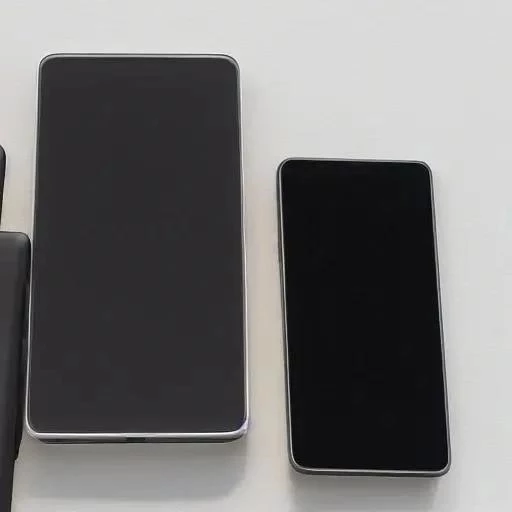In today’s fast-paced business environment, equipping your team with the right tools is crucial for success. Selecting the optimal smartphone can significantly impact productivity, communication, and overall efficiency. The Samsung Galaxy S23 Ultra and the Google Pixel 7 Pro stand out as top contenders, both offering a compelling blend of features tailored to the modern professional. This article delves into a detailed comparison, specifically analyzing how each device caters to the unique demands of the business world, helping you make an informed decision on whether the Samsung Galaxy S23 Ultra or the Pixel 7 Pro is the better choice for your organization.
Key Considerations for Business Users
When choosing a smartphone for business use, several factors come into play; These extend beyond just personal preferences and delve into functionality, security, and integration within a business ecosystem. Here are some critical aspects to consider:
- Security: Robust security features are paramount to protect sensitive company data.
- Productivity: Features like multitasking capabilities, stylus support, and integration with productivity apps are essential.
- Connectivity: Reliable and fast connectivity is vital for seamless communication and collaboration.
- Battery Life: A long-lasting battery ensures employees can stay connected throughout the workday without interruption.
- Durability: The device must withstand the rigors of daily use and potential accidents.
- Software and Support: Timely software updates and reliable customer support are crucial for maintaining device security and functionality.
Samsung Galaxy S23 Ultra: A Powerhouse for Professionals
The Samsung Galaxy S23 Ultra boasts a powerful processor, a stunning display, and a versatile camera system. Its S Pen integration allows for precise note-taking and document annotation, making it a valuable tool for professionals on the go. Furthermore, Samsung’s Knox security platform provides a robust defense against potential threats, ensuring the safety of sensitive business data. The large screen is great for reviewing documents and presentations.
Strengths of the S23 Ultra for Business
- S Pen Integration: Enhanced productivity with precise note-taking and document markup.
- Samsung Knox Security: Enterprise-grade security platform for data protection.
- DeX Mode: Desktop-like experience when connected to an external display.
- Powerful Performance: Handles demanding tasks and multitasking with ease.
Google Pixel 7 Pro: Simplicity and AI-Powered Efficiency
The Google Pixel 7 Pro excels in its simplicity and user-friendly interface. Its AI-powered features, such as Magic Eraser and Photo Unblur, can be beneficial for creating professional-looking marketing materials or cleaning up important documents. Google’s Titan M2 security chip and regular software updates provide a secure and reliable platform for business users. The Pixel 7 Pro also integrates seamlessly with Google’s suite of productivity apps, offering a streamlined workflow.
Strengths of the Pixel 7 Pro for Business
- Clean and Intuitive Interface: Easy to navigate and use, minimizing training time.
- AI-Powered Features: Enhance productivity and streamline tasks.
- Titan M2 Security Chip: Enhanced security for data protection.
- Seamless Google Integration: Smooth workflow with Google’s suite of productivity apps.
Comparative Table: S23 Ultra vs. Pixel 7 Pro
| Feature | Samsung Galaxy S23 Ultra | Google Pixel 7 Pro |
|---|---|---|
| Processor | Snapdragon 8 Gen 2 for Galaxy | Google Tensor G2 |
| Security | Samsung Knox | Titan M2 Chip |
| Stylus | Integrated S Pen | None |
| Software Updates | 4 years of OS updates, 5 years of security updates | 3 years of OS updates, 5 years of security updates |
| Starting Price | Higher | Lower |
Ultimately, the best choice between the Samsung Galaxy S23 Ultra and Google Pixel 7 Pro depends on your specific business needs and priorities. The Samsung Galaxy S23 Ultra offers a more feature-rich experience with its S Pen integration, desktop mode, and enterprise-grade security, making it ideal for power users who require maximum productivity and data protection. On the other hand, the Google Pixel 7 Pro provides a simpler, more intuitive experience with its AI-powered features and seamless Google integration, making it a great choice for businesses seeking ease of use and efficient workflows. Consider your budget, IT infrastructure, and employee preferences to make the most informed decision.
Making the Right Decision: A Practical Approach
Beyond the specifications and feature lists, a practical approach to selecting the right smartphone involves a few key steps. Firstly, conduct a thorough needs assessment. Identify the specific tasks and workflows that your employees perform on a daily basis. Do they require extensive note-taking capabilities? Are they frequently presenting information to clients? Do they rely heavily on cloud-based applications? Understanding these needs will help you prioritize the features that matter most. Secondly, consider the existing IT infrastructure. If your organization already utilizes Google Workspace extensively, the Pixel 7 Pro’s seamless integration may offer a significant advantage. Conversely, if you require robust device management and security features, the S23 Ultra’s Knox platform might be the better option. Thirdly, pilot testing is crucial. Before making a large-scale purchase, provide a small group of employees with both devices and gather their feedback. This will provide valuable insights into the real-world usability and suitability of each phone for your specific business requirements.
Beyond the Phone: Ecosystem Considerations
The smartphone is only one piece of the puzzle. Consider the broader ecosystem of accessories and services that each manufacturer offers. Samsung, for example, provides a wide range of compatible devices, including smartwatches, tablets, and earbuds, all designed to work seamlessly together. Google offers similar integration through its Pixel ecosystem, allowing for easy data sharing and device management. Assess which ecosystem aligns best with your overall business strategy and existing technology investments. Think about accessories such as cases, screen protectors, and charging docks. These seemingly small details can contribute significantly to the overall user experience and device longevity.
Cost Analysis: Long-Term Implications
While the initial purchase price is a significant factor, it’s crucial to consider the long-term costs associated with each device. This includes not only the cost of the phone itself but also the cost of accessories, software updates, repairs, and data plans. The Samsung Galaxy S23 Ultra typically commands a higher upfront price, but its longer software update cycle and potentially lower repair costs (depending on your chosen insurance plan) may offset this difference over time. The Pixel 7 Pro, with its lower initial price, might seem more appealing from a budgetary perspective. However, consider the potential cost of replacing the device sooner due to shorter software support or unforeseen hardware issues. A comprehensive cost analysis, factoring in all these variables, will provide a clearer picture of the true cost of ownership.
Mobile Device Management (MDM) Considerations
For larger organizations, Mobile Device Management (MDM) is a critical aspect of smartphone deployment. MDM solutions allow IT administrators to remotely manage and secure devices, enforce security policies, and deploy applications. Both Samsung and Google offer robust MDM capabilities, but the specific features and integration with existing MDM platforms may vary. Evaluate the compatibility of each device with your chosen MDM solution to ensure seamless management and security compliance. Consider factors such as remote wiping capabilities, app whitelisting/blacklisting, and the ability to enforce password policies. A well-integrated MDM solution can significantly reduce the administrative overhead associated with managing a fleet of smartphones.
The Verdict: Streamlining Your Decision
The decision between the Samsung Galaxy S23 Ultra and the Google Pixel 7 Pro hinges on a precise evaluation of your business requirements. This evaluation should encompass the specific tasks performed by your workforce, the existing technological infrastructure, and the long-term budgetary implications. The Samsung Galaxy S23 Ultra excels with its comprehensive feature set, making it suitable for power users requiring extensive functionality. Understanding the advantages and disadvantages of each device is key to making an informed decision.
Final Recommendations
- For businesses prioritizing productivity and comprehensive features: Samsung Galaxy S23 Ultra.
- For businesses seeking a user-friendly interface and AI-driven efficiency: Google Pixel 7 Pro.
- Conduct pilot testing with a representative group of employees to gather real-world feedback.
- Evaluate the compatibility of each device with your existing Mobile Device Management (MDM) solution.
- Consider the long-term cost of ownership, including software updates, repairs, and data plans.
By carefully considering these factors, businesses can select the smartphone that best empowers their workforce and contributes to overall organizational success. Remember that technology is an enabler, and the optimal choice should align seamlessly with your strategic objectives and operational needs. The initial consideration should be: what does the team need to accomplish on a daily basis? The answer to this question will make choosing the right phone easier.


